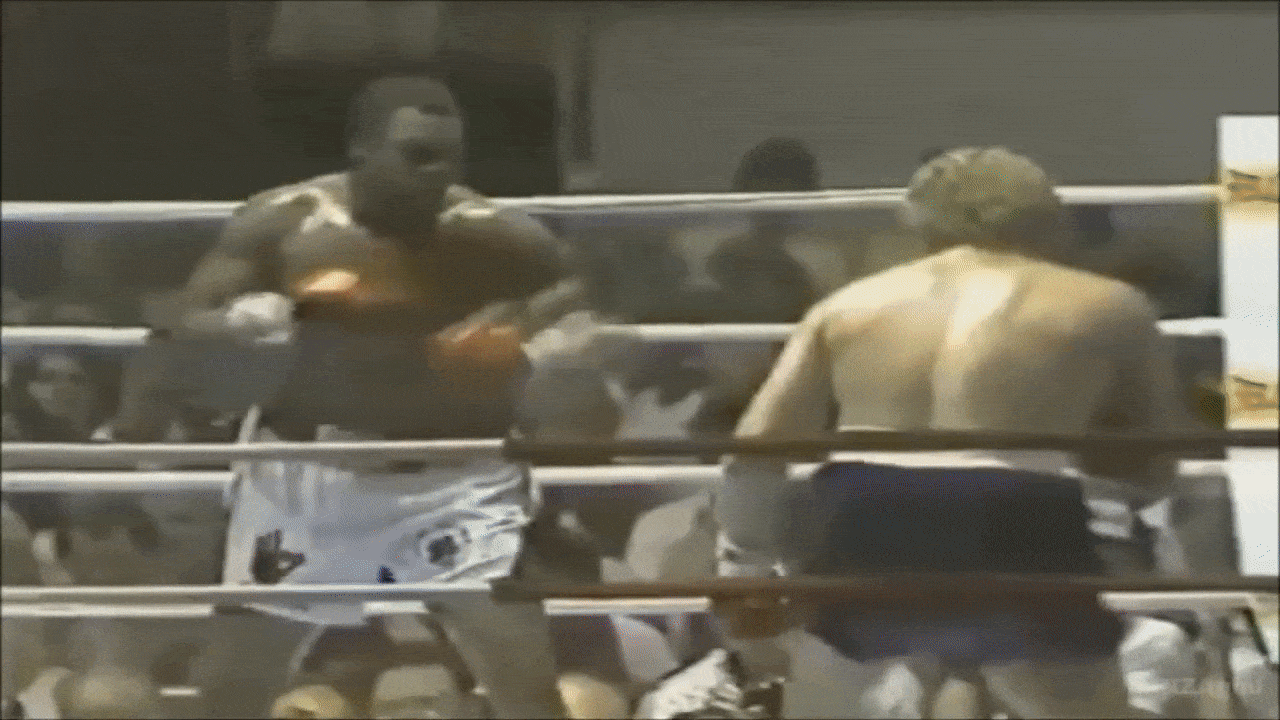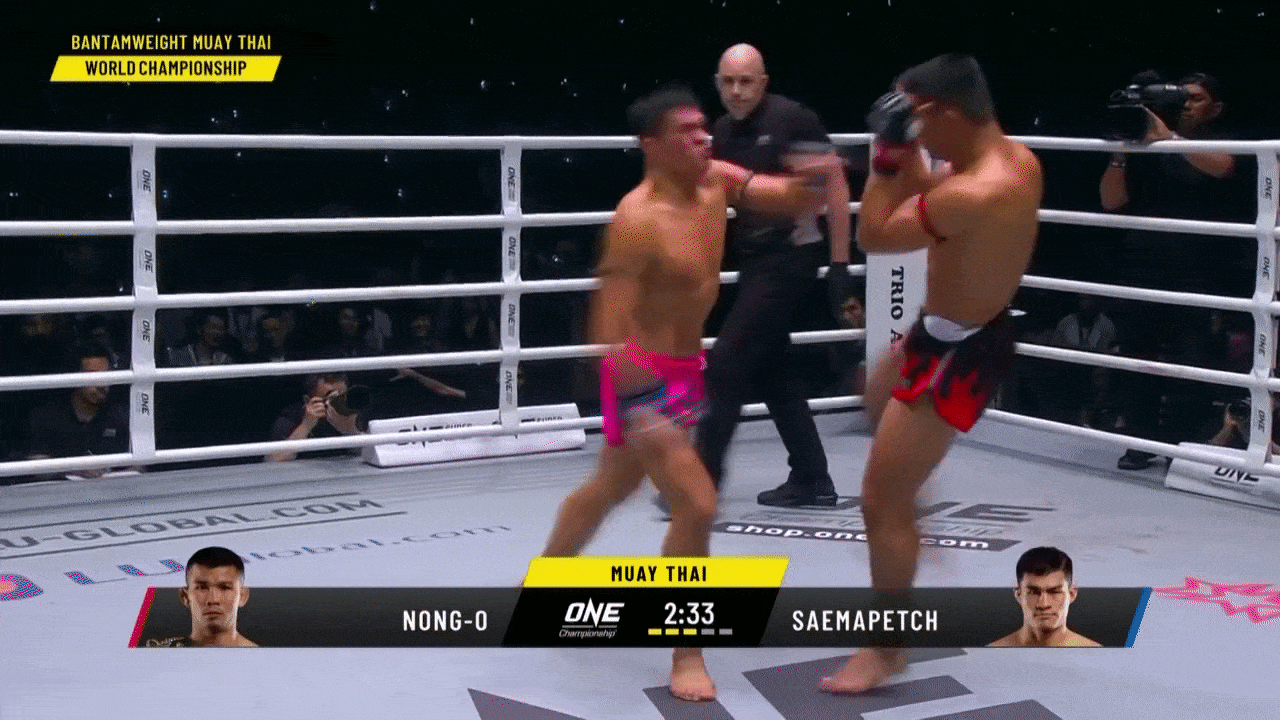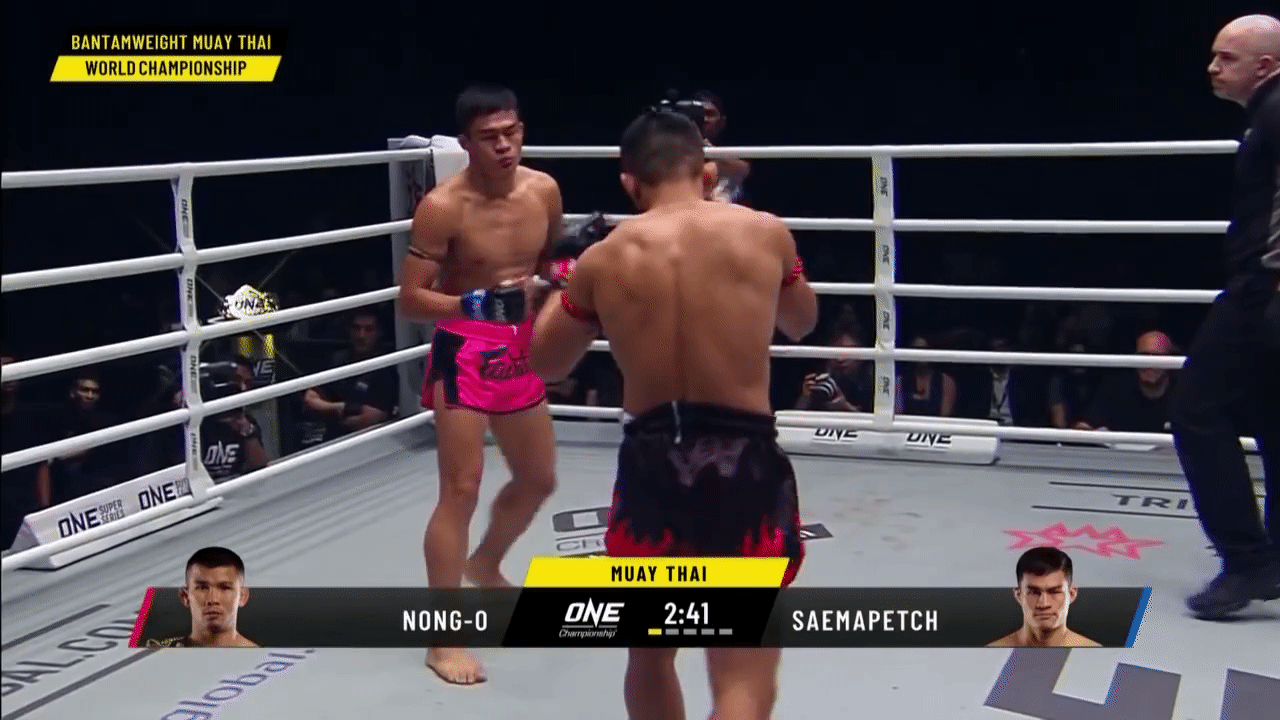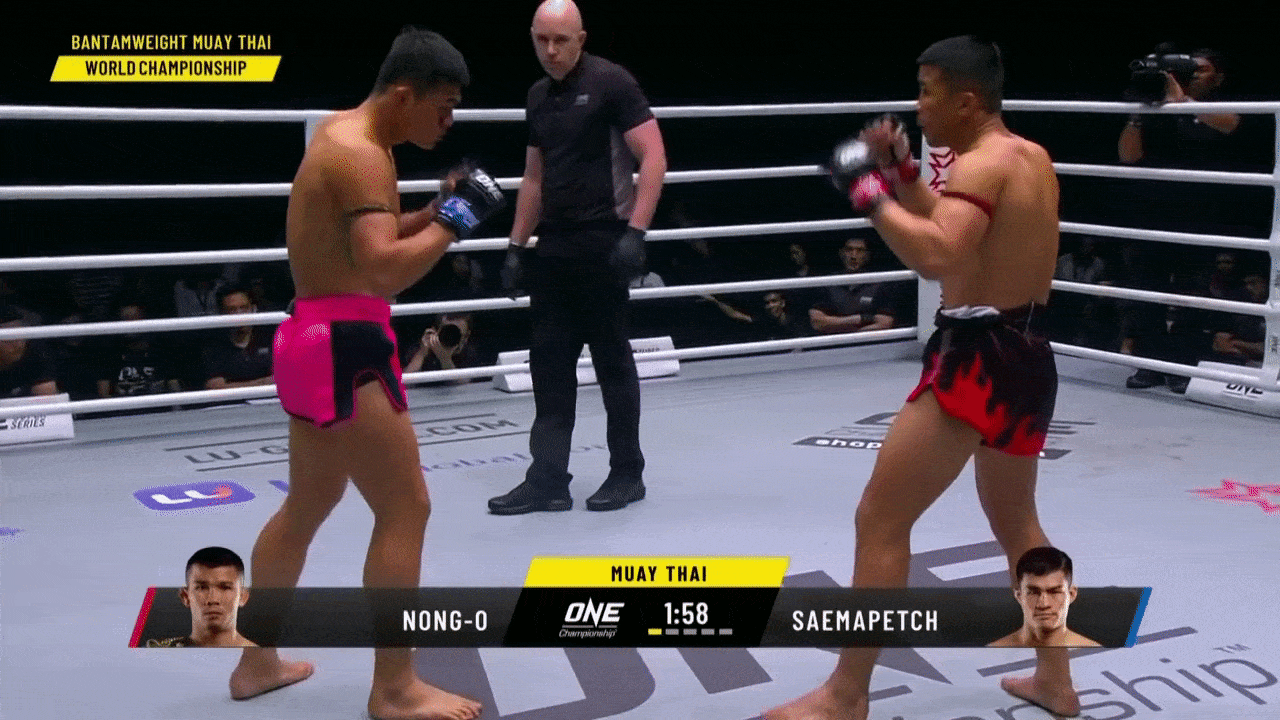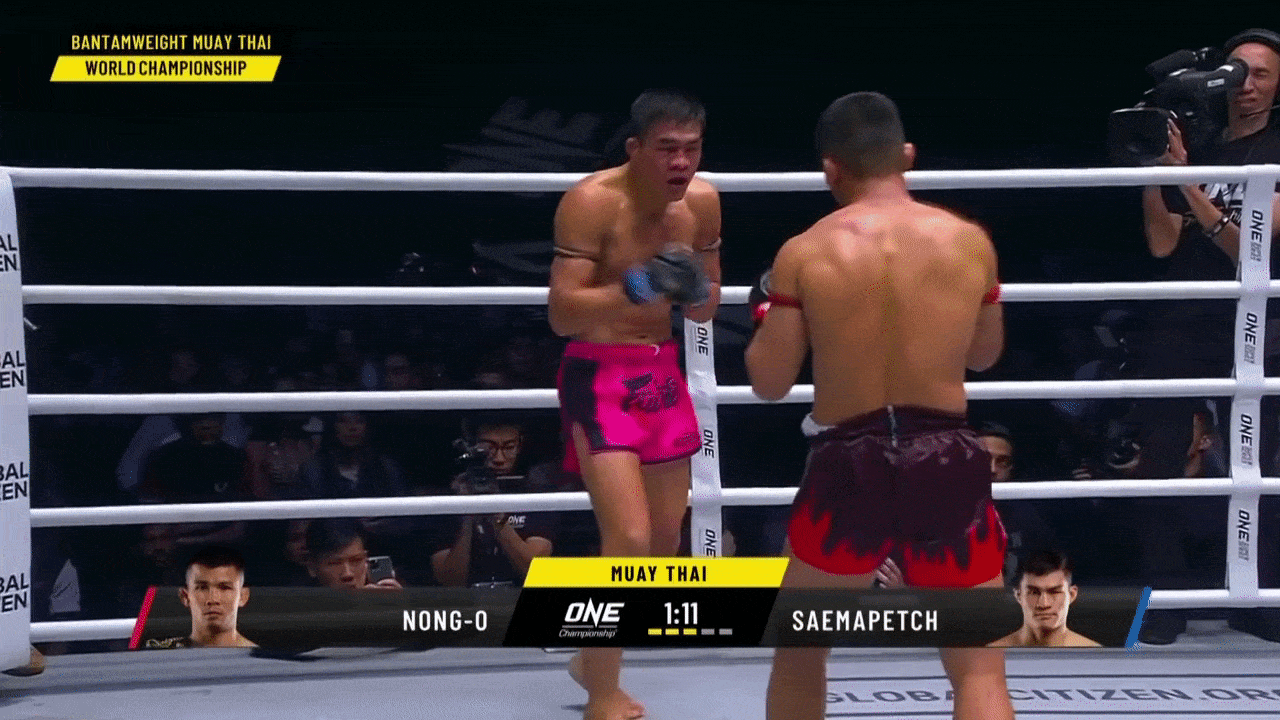Southpaw vs. Orthodox - A Fight Analysis
Most bouts are fought between two right handed competitors. However, when a left handed (Southpaw) fighter and a right handed (Orthodox) fighter square up in the ring, the fighters have to decode a whole different set of angles, openings, and defensive requirements. In Western boxing, this has led to decades of elite fighters avoiding their southpaw counterparts. In Muay Thai however, there are a larger percentage of southpaw fighters and losses are more readily accepted. Fight fans get to witness countless matches between top level southpaw and orthodox competitors.
In One FC, a promotion that combines Muay Thai, kickboxing, and MMA matches into single events, fans were luckily enough to witness the legend Nong-O Gaiyanghadao put on an absolute ‘southpaw vs. orthodox clinic’ against his lefty opponent Saemapetch Fairtex. Below the full fight video, we will highlight some of the beautiful feints, footwork techniques, strategies, and combinations that Nong-O used to secure his stoppage victory. Well pass his stadium prime, it is important to note that Nong-O has stronger credentials than his extremely game and very well decorated opponent Saemapetch. This bout featured a true legend against a seasoned up and comer.
Understanding the ‘Center Line’
In same stance competition, the lead side acts as the center line. If two same stance fighters are standing across from each other and one extends his jab, that punch will shoot straight down the middle directly at the opposing fighter’s face. This is why you hear so many boxing trainers say, ‘Everything comes off of the jab’.
Larry Holmes, one of the best heavyweight jabbers of all time, utilizing the lead jab straight down the pipe.
However in southpaw vs. orthodox competition, when two fighters square up their rear crosses take the center line while their lead hands and feet are much closer to each other. This nullifies a significant amount of the lead side effectiveness and changes the openings in a fight.
Because of this, in opposite stance bouts a larger percentage of effective strikes and combinations are thrown from the rear side. More on this later!
The small distance between their lead hands means that opposite stance fighters often paw their hand out fighting for the dominant position.
Controlling The Lead Foot
Because of the aforementioned difference between the orthodox vs. orthodox center line and the southpaw vs. orthodox center line, fighters use lead hand control and lead foot control to set up their rear power shots. In The GIF below, watch how Nong-O keeps his lead foot just on the outside of Saemapetch’s, while simultaneously setting up an angle that keeps his rear power shots on the center. This nullifies Saemapetch’s opportunities.
By controlling both foot and hand control, Nong-O was able to fire the stronger and more effective rear power shots.
Rear Strike Creativity
We have now established that a smart game plan against an opposite stance opponent is to: A. nullify their opportunities by controlling the lead side; and B. create opportunities for your rear strikes.
Nong-O does this beautifully throughout the fight, using feints to keep Saemapetch guessing and doubling (or tripling and quadrupling) rear strikes. He also constantly changes the levels of his strikes. Kicks land to the inside leg, the body, and the head. His straight cross hits the body and the head. Because he constantly feints, constantly fakes strikes from the rear side, it becomes almost impossible to read what Nong-O will throw and when he will throw it.
A rear teep with little power to gauge his opponent, followed by a strong body kick, followed by a fake body kick into a cross into another body kick. Next level stuff.
Constant Fakes, Feints, and Reads
There is a common misconception that all Thai fighters are plodding. That they move primarily forward, have little head movement, and rely on single power shots. Obviously, this is false in so many ways, but in this particular fight, it is easy to see that Nong-O is constantly creating new looks and using a wide variety of tricks, angles, and feints to find openings.
Sidestepping Your Opponent’s Cross
My favorite moment of the fight was a beautiful sidestep counter from Nong-O. After partially eating a straight left from Saemapetch, Nong-O patiently waits for another one, side-stepping to his outside and following with a cross of his own on the newly created angle. It’s not rocket science nor is this any hidden secret, but to implement the technique so smoothly in a fight shows the true mastery of Nong-O.
This was a truly spectacular fight, with both fighters showing tons of heart. One FC seems committed to signing top Muay Thai talent and putting them in tiny little MMA gloves. I am sure that they will continue to pump out top-notch fights. The other beautiful thing about this fight, and about Muay Thai in general, is that none of these techniques are a secret. It’s simple stuff that takes thousands of hours of practice, repetition, and dedication to put into practice.
If you live in the Philadelphia area or are swinging through, stop by Juniper Muay Thai to learn some of this technique and train at a gym that caters to fighters, weekend warriors, and anyone looking to increase their fitness levels and gain confidence. From the Kids classes, to Women’s Muay Thai classes, to All-Levels and Advanced, every class is taught by a coach with years and years of real-world competition and coaching experience.

